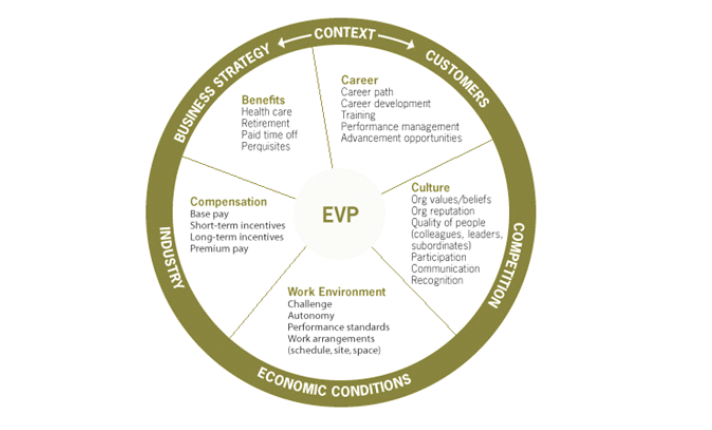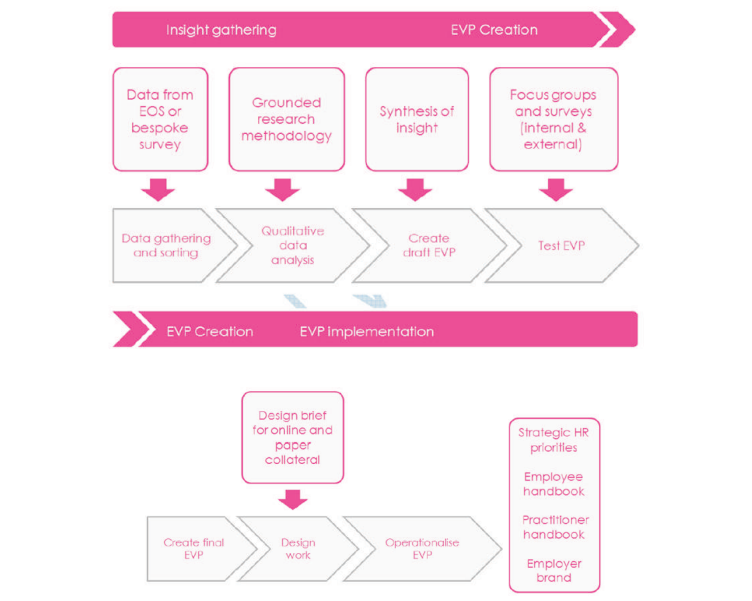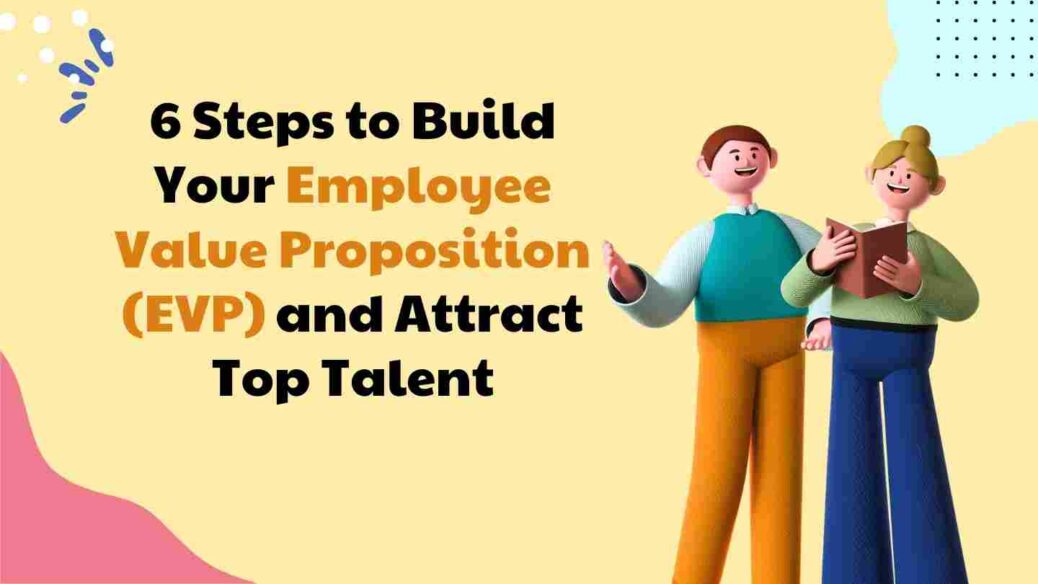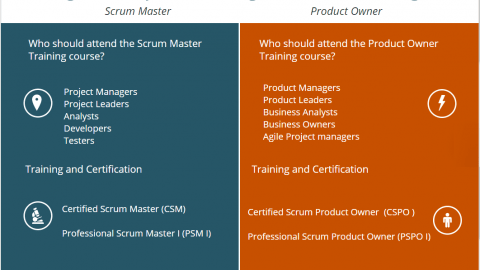Unveiling the Secret Weapon: 6 Steps to Build Your Employee Value Proposition (EVP) and Attract Top Talent
In today’s competitive talent landscape, where skilled professionals have their pick of opportunities, attracting and retaining top performers is a top priority for any business. But how do you convince these exceptional individuals that your company is the ideal place for them to thrive? Enter the Employee Value Proposition (EVP) (employee value proposition definition), your company’s secret weapon in the war for talent.
Table of Contents
An EVP (employee value proposition examples) is essentially a promise you make to potential employees. It outlines the unique set of benefits, the vibrant culture you’ve cultivated, and the exciting growth opportunities your company offers, all wrapped up in a compelling message that sets you apart from the competition. Crafting a strong EVP is an investment that yields significant returns – it attracts high-performing individuals who not only possess the skills you need but also share your company’s values and vision.

EVP
Why is a Strong Employee Value Proposition (EVP) Important?
A well-defined Employee Value Proposition (EVP) offers a multitude of benefits for your company:
-
Attracts Top Talent: A strong EVP acts as a magnet, drawing in qualified candidates who are not only impressed by your offerings but also see themselves thriving in your company culture.
-
Differentiates You from Competitors: In a crowded job market, a compelling Employee Value Proposition (EVP) (employee value proposition definition) highlights what makes your company unique, separating you from the pack and grabbing the attention of the best candidates.
-
Fosters Employee Engagement: When employees understand the value you place on them, through a well-defined Employee Value Proposition (EVP), they’re more likely to be engaged, motivated, and productive.
-
Strengthens Your Employer Brand: A strong Employee Value Proposition (EVP) (employee value proposition definition) builds a positive reputation for your company, attracting top talent and making you an employer of choice.
By investing in crafting a compelling Employee Value Proposition (EVP), you’re essentially creating a powerful tool to attract, retain, and engage the best and brightest talent in your industry.
Stay tuned for the next chapter, where we’ll delve into the steps involved in crafting a compelling EVP that will make your company a magnet for top talent
So, how do you build an EVP (employee value proposition definition) that resonates with your ideal candidate and makes them say, “Yes, this is exactly where I want to be!”? Here’s a detailed roadmap with 6 steps to guide you:

Employee Value Proposition STAGES
Step 1: Take Stock of Your Current Employee Offerings – A Deep Dive into Your Unique Value
Before you can effectively communicate the value proposition you offer employees, you need to understand what that value proposition actually is. This involves taking a deep dive into your company’s existing offerings for employees. Here’s what to consider:
-
Compensation and Benefits: Analyze your salary structure, compare it to industry benchmarks, and assess the overall competitiveness of your compensation package. Don’t forget to delve into your benefits package – health insurance options, paid time off policies, and any unique perks you provide (like gym memberships, on-site childcare, or generous parental leave policies) all contribute to your overall value proposition.
-
Work Environment: What kind of work environment have you fostered at your company? Is it a collaborative space where teamwork is encouraged, or is it a fast-paced, results-oriented environment that thrives on individual initiative? Do you offer flexible work arrangements like remote work options or flexible hours? Understanding your company culture and the work environment you’ve created is crucial, as it will resonate with certain types of candidates more than others.
-
Career Development: One of the most attractive aspects of any job can be the opportunity for professional growth. What programs or initiatives do you have in place to help employees learn and develop their skills? Do you offer training programs, mentorship opportunities, or clear paths for promotion within the company? Highlighting these aspects in your EVP will be particularly appealing to ambitious candidates who are eager to advance their careers.
Find Best Candidates for Your Open Job Roles: 5 Tips – projectcubicle
Step 2: Listen to the Voices That Matter Most – Current and Past Employees
Your employees are a treasure trove of information when it comes to crafting a strong EVP. They are the ones who experience your company culture firsthand, who benefit (or don’t) from your programs and initiatives, and who ultimately decide whether to stay with your company or seek opportunities elsewhere.
Conduct surveys or hold focus groups to understand what your current employees value most about working at your company. What excites them about coming to work each day? What opportunities for growth do they see? Their insights are invaluable in shaping your EVP.
You can also reach out to past employees (employee value proposition definition) to learn why they left (or stayed) – their feedback, both positive and negative, can be a powerful tool for identifying areas where you excel and areas for improvement. For example, ask them questions like “What could have made you stay at the company?” or “What aspects of the company culture did you find most appealing?”
Step 3: Define Your Key Differentiators – What Makes You Shine?
Once you’ve gathered information from both internal and external sources (current and past employees), it’s time to analyze it all and identify what truly sets your company apart from the competition. Is it your industry-leading benefits package? A culture of innovation and risk-taking that fosters creativity and problem-solving? Exceptional learning and development programs that empower employees to reach their full potential?
Focus on the unique aspects that will resonate most with your target talent pool. Are you recruiting for experienced professionals who value work-life balance and a collaborative environment? Or are you seeking recent graduates who are eager to learn and grow in a fast-paced startup environment? Understanding your ideal candidate will help you tailor your EVP message accordingly.
Stay tuned for the next chapter, where we’ll delve into crafting a clear, concise EVP statement that encapsulates your company’s unique value proposition!
In the previous chapter, we explored the importance of a strong Employee Value Proposition (EVP) and the first crucial step of taking stock of your current employee (employee value proposition definition) offerings. We emphasized the need to understand your compensation and benefits package, your company culture, and the career development opportunities you provide. We also discussed the valuable insights you can gain by listening to your current and past employees.
Now, let’s delve deeper into the remaining steps to craft an EVP that will make your company a magnet for top talent.
Step 4: Craft Your EVP Statement – The Heart of Your Employer Brand
Once you’ve identified your key differentiators – the unique aspects that make your company stand out – it’s time to translate them into a clear, concise statement that encapsulates your Employee Value Proposition (EVP). This statement serves as the heart of your employer brand, a compelling message that will resonate with potential candidates and differentiate you from competitors.
For example: If you’re a company known for its cutting-edge technology and fast-paced environment, you might craft an EVP statement like:
We offer talented software engineers the opportunity to develop groundbreaking technologies and push the boundaries of innovation in a collaborative and fast-paced environment that values creativity and problem-solving.
Remember, your EVP statement should be:
- Clear and concise: Get straight to the point and avoid jargon.
- Benefit-oriented: Focus on what’s in it for the candidate, not just your company’s achievements.
- Authentic: Be genuine and reflect your company culture accurately.
- Actionable: Use strong verbs and inspire candidates to take the next step.
Step 5: Promote Your EVP Through the Right Channels – Spreading the Word About Your Value
Crafting a compelling EVP is just the first step. The next step is to get the word out and ensure your target audience hears your message loud and clear. Here are some key channels to leverage:
- Job Postings: Integrate your EVP statement and key benefits into all your job postings. Use bold keywords throughout the description to highlight what makes your company unique and attract candidates searching for specific benefits like work-life balance, remote work options, or professional development opportunities.
- Careers Page: Dedicate a prominent section on your careers page to showcasing your EVP. Use compelling visuals, employee testimonials, and clear explanations of your benefits package, work environment, and career development programs.
- Social Media: Promote your EVP on social media platforms like LinkedIn and Glassdoor. Share employee stories, highlight company events, and showcase your company culture to build a strong employer brand and attract potential candidates who are actively searching for new opportunities.
Leverage SEO (Search Engine Optimization) by strategically using relevant keywords throughout your content. This will ensure that when potential candidates search for jobs with specific criteria (like “software engineer jobs with remote work options”), your company shows up in their search results.
Step 6: Continuously Monitor and Refine – Keeping Your EVP Relevant and Competitive
Your EVP is not a static document set in stone. The needs of your employees and the job market will evolve over time. Here’s how to ensure your EVP stays relevant and continues to attract top talent:
- Gather Feedback: Regularly gather feedback from employees through surveys, focus groups, or one-on-one conversations. Understand what they value most about working at your company and identify areas for improvement.
- Monitor Key Metrics: Track key metrics like employee engagement, retention rates, and time-to-hire. These metrics can provide valuable insights into the effectiveness of your EVP.
- Be Prepared to Adapt: The job market is constantly changing. New trends emerge, and skills requirements evolve. Be prepared to adapt your EVP to stay relevant and attractive to top talent.
By following these steps and continuously refining your Employee Value Proposition (EVP), you can position your company as a magnet for talented individuals who are excited to contribute to your success. Remember, a strong EVP is an ongoing investment that pays off in a happy, productive, and high-performing workforce. A workforce that is not only skilled and experienced but also deeply invested in your company’s mission and vision. In today’s competitive landscape, that’s the ultimate competitive advantage.
Employee Value Proposition (EVP) FAQs Answered:
What are the 4 employee value propositions?
There isn’t a universally agreed-upon set of 4 core EVPs. However, strong EVPs typically focus on a combination of these aspects:
- Compensation & Benefits: Competitive salary, health insurance, paid time off, etc.
- Work Environment: Collaborative culture, positive atmosphere, work-life balance, etc.
- Career Development: Training programs, mentorship opportunities, promotion paths, etc.
- Company Culture & Values: Mission-driven organization, focus on diversity and inclusion, strong ethics, etc.
What are the components of EVP?
The components of an EVP can vary, but some common themes include:
- Rewards: Competitive salary, benefits package, unique perks.
- Work Environment: Collaboration, positive atmosphere, flexibility (remote work options).
- Development: Training programs, mentorship, opportunities to learn and grow.
- Recognition: Appreciation for employee contributions.
- Values: Mission, purpose, ethical practices, sense of belonging.
What are the 5 pillars of EVP?
Similar to the 4 components, there isn’t a single set of 5 pillars. However, some frameworks use concepts like:
- Clarity: A clear and concise message about your value proposition.
- Competition: How you differentiate yourself from competitors in the job market.
- Consistency: Consistent messaging across all your recruitment channels.
- Compelling: A message that resonates with your target audience and attracts top talent.
- Offer: The total package you offer employees, encompassing rewards, work environment, development, and recognition.
What does EVP mean in HR?
In HR, EVP stands for Employee Value Proposition. It’s a strategic tool used to attract, retain, and engage top talent. It helps differentiate your company and build a strong employer brand.
What is the EVP strategy?
An EVP strategy involves defining (employee value proposition definition) your ideal candidate, identifying your unique strengths as an employer, crafting a compelling message, and promoting it through various channels (job postings, careers page, social media, SEO).
What is Apple’s EVP?
While Apple’s EVP isn’t officially published, it’s likely to focus on aspects like:
- Innovation: Working on cutting-edge technologies and industry-changing products.
- Collaboration: Working with talented individuals in a team-oriented environment.
- Impact: Making a real difference in the world with the products they develop.
What is an example of an EVP?
Here’s an example: “We offer talented software engineers the opportunity to develop groundbreaking technologies and push the boundaries of innovation in a collaborative and fast-paced environment that values creativity and problem-solving.”
Unveiling the Power of Employee Value Proposition (EVP)
In the previous chapter, we explored the core concept of an Employee Value Proposition (EVP) and its importance in attracting top talent. Now, let’s delve into some real-world examples (Employee value proposition examples) to gain inspiration for crafting your own compelling EVP.
Employee Value Proposition Examples to Spark Your Creativity:
Company A: Tech Startup Trailblazer
Employee value proposition examples: “We offer passionate software engineers the opportunity to develop cutting-edge technologies that disrupt entire industries. Join our fast-paced, collaborative environment where innovation is king and your ideas can make a real difference. We invest heavily in professional development, providing mentorship programs and generous learning stipends to fuel your growth. Become part of a team that’s redefining the future, all while enjoying flexible work arrangements and a fun-filled company culture.”
Here, Company A’s Employee Value Proposition (EVP) emphasizes -employee value proposition definition- the exciting nature of working on groundbreaking projects in a fast-paced startup environment. They highlight opportunities for professional development, a collaborative culture, and the flexibility to achieve a healthy work-life balance.
Company B: Industry Leader with a Heart
Employee value proposition examples: “We are a Fortune 500 company with a rich history of innovation and a deep commitment to social responsibility. We offer competitive salaries, comprehensive health benefits, and a generous 401(k) match. At Company B, you’ll find a supportive and inclusive work environment where your unique talents are valued. We provide comprehensive training programs to help you excel in your role and offer clear paths for promotion within the organization. Join us in making a positive impact on the world, one project at a time.”
Company B’s Employee Value Proposition (EVP) focuses on stability, security, and the opportunity to contribute to a meaningful cause. They highlight competitive compensation and benefits, a supportive work environment, and clear growth opportunities.
Company C: Remote Work Champions
EVP: “At Company C, we believe that flexibility and a healthy work-life balance are essential for peak performance. That’s why we offer a fully remote work environment, allowing you to work from anywhere in the world. We provide top-of-the-line equipment and technology to ensure a seamless remote work experience. Join our collaborative online community and build meaningful connections with colleagues from across the globe. We offer competitive salaries, comprehensive health insurance, and a generous wellness stipend to support your overall well-being.”
Company C’s Employee Value Proposition examples (EVP) caters to professionals who value the freedom and flexibility of remote work. They highlight the benefits of a remote work environment, a collaborative online culture, competitive compensation and benefits, and a focus on employee well-being.
These are just a few examples (Employee value proposition examples), and the ideal Employee Value Proposition (EVP) for your company will depend on your unique offerings and target audience. The key takeaway is to craft a message that resonates with your ideal candidate and showcases the specific value you bring to the table as an employer.
Stay tuned for the next chapter, where we’ll provide a step-by-step guide to crafting your own winning Employee Value Proposition (EVP)!
How do I create an EVP?
Here’s a basic process:
- Understand your company’s offerings (compensation, benefits, work environment, etc.)
- Listen to your employees (surveys, focus groups) to understand what they value.
- Identify what makes your company unique as an employer (your differentiators).
- Craft a clear, concise EVP statement highlighting key benefits.
- Promote your EVP through various channels (job postings, careers page, social media).
- Continuously monitor and refine your EVP based on feedback and market changes.
Hello, I’m Cansu, a professional dedicated to creating Excel tutorials, specifically catering to the needs of B2B professionals. With a passion for data analysis and a deep understanding of Microsoft Excel, I have built a reputation for providing comprehensive and user-friendly tutorials that empower businesses to harness the full potential of this powerful software.
I have always been fascinated by the intricate world of numbers and the ability of Excel to transform raw data into meaningful insights. Throughout my career, I have honed my data manipulation, visualization, and automation skills, enabling me to streamline complex processes and drive efficiency in various industries.
As a B2B specialist, I recognize the unique challenges that professionals face when managing and analyzing large volumes of data. With this understanding, I create tutorials tailored to businesses’ specific needs, offering practical solutions to enhance productivity, improve decision-making, and optimize workflows.
My tutorials cover various topics, including advanced formulas and functions, data modeling, pivot tables, macros, and data visualization techniques. I strive to explain complex concepts in a clear and accessible manner, ensuring that even those with limited Excel experience can grasp the concepts and apply them effectively in their work.
In addition to my tutorial work, I actively engage with the Excel community through workshops, webinars, and online forums. I believe in the power of knowledge sharing and collaborative learning, and I am committed to helping professionals unlock their full potential by mastering Excel.
With a strong track record of success and a growing community of satisfied learners, I continue to expand my repertoire of Excel tutorials, keeping up with the latest advancements and features in the software. I aim to empower businesses with the skills and tools they need to thrive in today’s data-driven world.
Suppose you are a B2B professional looking to enhance your Excel skills or a business seeking to improve data management practices. In that case, I invite you to join me on this journey of exploration and mastery. Let’s unlock the true potential of Excel together!
https://www.linkedin.com/in/cansuaydinim/











great sir beneficial article thanks for sharing.
“Unveiling the secret weapon of building an Employee Value Proposition (EVP) is a game-changer for attracting top talent! This comprehensive guide breaks down the process into six actionable steps, empowering organizations to craft compelling value propositions that resonate with potential employees. From defining your employer brand to identifying unique benefits and communication strategies, each step is crucial in creating a compelling EVP that sets your company apart. Thanks for providing such valuable insights and practical advice for organizations looking to attract and retain top talent in today’s competitive job market.”